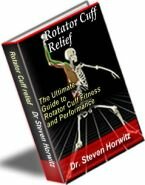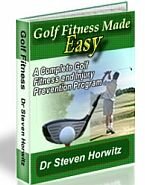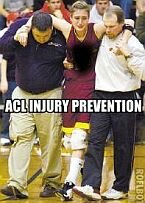Sprains and Strains
A sprain is an injury to a ligament, the fibrous connective tissue that connects one end of a bone to another. Ligaments stabilize and support the joints in the body, but do not have contractile tissue like muscle.
A strain is an injury to a muscle, the tissue that makes bones move, or a tendon, the tissue at either end of a muscle that attaches to bone.
When a ligament, muscle or tendon is injured the fibers of the structure actually tear. You can think of these structures like a rope. A rope is made of individual strands. If these strands tear, the rope is weakened. When you sprain a ligament or strain a muscle/tendon you are actually tearing fibers of the structure. The degree of injury is graded on a scale of I to III. A grade I sprain or strain means that you have torn some of the fibers. You will have some pain and swelling, but you can probably move the joint or muscle. A grade I sprain or strain means that you have torn a significant number of fibers. You will definitely have pain and swelling and may only be able to move the joint or muscle slightly. A grade III sprain or strain means that you have torn all or almost all of the fibers. This one really hurts and you will not be able to move the joint or muscle.
Sprains and strains can have many causes. Trauma (slip, fall, collision) is the usual cause opf acute injury. Landing on another person's foot when playing basketball, sliding into a base, landing on an outstretched arm can all cause these injuries. Inadequate warm-up, poor overall conditioning, improper equipment, dehydration, poor strength and flexibility, overuse and lack of rest can all predispose a person to sprains and strains. Age is certainly a factor because as you get older you will lose strength and flexibility IF you do not workout regularly. You also need more time to warm-up, rest and recover as you age. Women are more predisposed to sprains of the knee (ACL -anterior cruciate ligament) than men (for more information read ACL Injuries in Female Athletes). Children can injure themselves more easily because of lack of strength and overuse. All sports have the potential to cause sprains and strains.
When To See a Doctor for a Sprain
- You have severe pain and cannot put any weight on the injured joint.
- The injured area looks crooked or has lumps and bumps (other than swelling) that you do not see on the uninjured joint.
- You cannot move the injured joint.
- You cannot walk more than four steps without significant pain.
- Your limb buckles or gives way when you try to use the joint.
- You have numbness in any part of the injured area.
- You see redness or red streaks spreading out from the injury.
- You injure an area that has been injured several times before.
- You have pain, swelling, or redness over a bony part of your foot.
- You are in doubt about the seriousness of the injury or how to care for it."
From Questions and Answers About Sprains and Strains
Treatment of sprains and strains begins with RICE: Rest, Ice, Compression and Elevation. Stop the activity immediately is you have any pain in a joint or muscle. Ice the area for 15 minutes every two hours even if you do not see immediate swelling. Mild compression a elevation of the injured area can relieve swelling. If you hear a loud "pop" and have immediate pain and swelling you need medical treatment immediately. You may need an X-ray to rule out a fractured bone. Otherwise, how you feel the morning after the injury will help indicate how severe the injury is. If the area hurts, is bruised, is swollen you need medical attention. You may need to immobilize the area with a brace briefly (a day or two) to let the area begin to heal. Taking an anti-inflammatory medication may be necessary to help decrease the inflammation and pain.
Two wonderful treatments for sprains and strains are called Active Release Techniques® and Graston Technique. Both of these treatments will help treat the result of either a sprain or strain which is scar tissue (adhesions). When the ligament, muscle or tendon tears, the body heals by laying down scar tissue in the injured area. This scar tissue must be broken up to restore the tissue's strength and elasticity. Both treatments can accomplish the breaking up of the scar tissue. Once this is done, proper strengthening, stretching and balance exercises must be done to restore strength, flexibility and proprioception (joint position sense). Proprioceptive exercise is often forgotten and is a major cause of reinjury. It is the brain and nervous system that send signals to the muscles that tell them to contract. When you walk on uneven terrain you don't have consciously think "foot- move up, move down, move left, move right." You automatically do it. That is proprioception. When you are injured you lose this ability somewhat. The good news is that it can be retrained easily by doing balance type exercises.
The most important thing to remember when getting ready for playing sports or physical activities is that you must get in shape to play a sport, not try to play the sport to get in shape. Professional and Olympic athletes get in shape to play there sports and you must do the same. This includes learning proper warm-up and cool down techniques, proper strength and flexibility training and nutrition.
|
The Ultimate Nutritional Lie Detector Test LEARN MORE 
|
Kettlebell Rehab

Click Here
To See How Kettlebells will transform your body!
Vortex Rehab

Click Here
To See How This
Revolutionary Machine
Can Help You!
Partner / Support

Loans up to 3 months - fast cash advances for up to 90 days and up to $5,000!


















